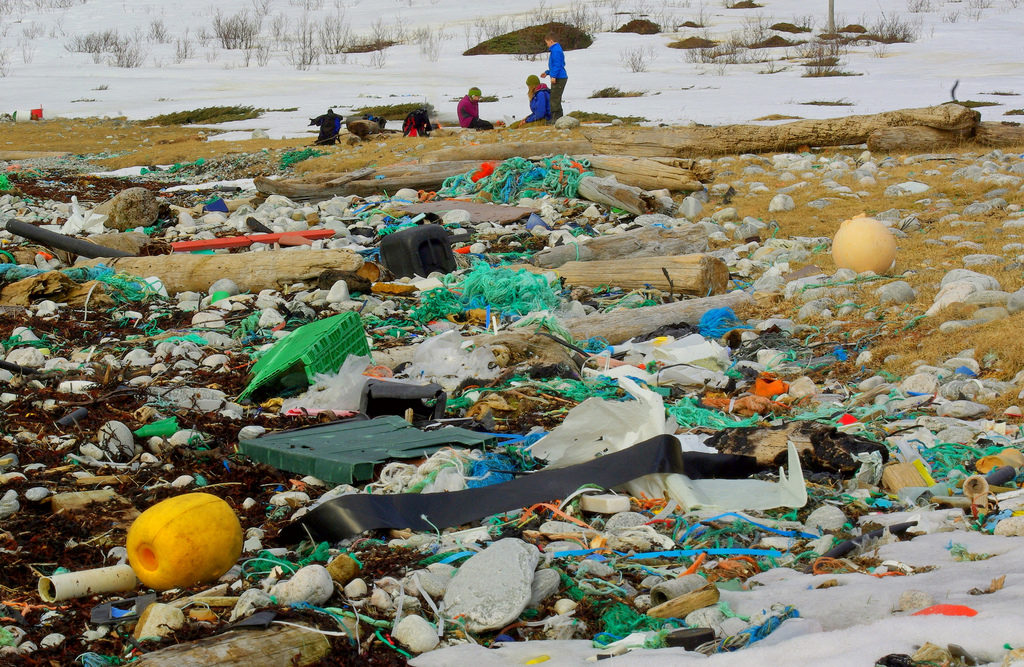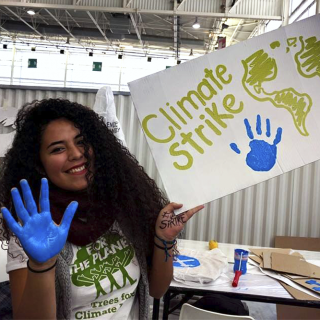Between 60 to 90 percent of the garbage that clogs the oceans consists of plastic, such as bags, PET bottles, straws and caps. Every year, 8 million tons of plastic end up in our waters, according to the UN Environment Program data. If this continues, by 2050, there may be more plastic than fish in our seas.
The plastic wreaks harm even in remote places such as Galapagos, where 22 tons of garbage were removed in the first quarter of 2018 alone. Amidst the discards was a plastic bottle that had travelled from Asia.
Birds suffer especially from the plastic deluge. A study published in August 2015 in the academic journal Proceedings of the National Academy of Sciences (PNAS) estimated that more than 90 percent of seabirds have already ingested plastic of some sort. If we continue at this rate, the authors projected that by 2050, 99 percent of seabird species will have plastic in their stomachs.
It’s a solvable problem but an urgent one: we (consumers, industry, and government) need to take action. In 2015, approximately 6,300 tons of plastic were discarded, 9 percent of which was recycled and 12 percent incinerated; the residual 79 percent went into landfills, forests or oceans. Recycling plastic is crucial, and we must also change some habits to avoid its use and reduce its production.
There is still time to reverse the worst-case scenarios through simple steps that you can take as soon as you finish reading this article!
1. Skip the straw
Why do we use a straw only to discard it right after use? A straw’s raw materials, polypropylene and polystyrene, are not biodegradable and will take at least a hundred years to decompose. Refuse it when offered and explain your reasons. As more consumers do this, more people will be sensitized and change their habits. If you cannot live without drinking through a straw (perhaps because of a physical disability), there are alternatives to plastic straws: metal or bamboo.
2. Everything but plastic
No one needs plastic bags. They can be replaced by cardboard boxes at no cost to you or to the environment. Cardboard boxes may have had little value in the past, but being both recyclable and reusable, they now signify environmental awareness. Another possibility is to bring your own reusable bag, made of some more durable material, like fabric, to the store. But you don’t even have to spend money to buy an ecobag: any purse or backpack that you already own will do.
Reducing the use of plastic bags has a real (and fast) impact on the marine environment. Check out what has happened in England in recent years: after the government began charging for bags in late 2015, 30 percent fewer plastic bags were dumped into the ocean, according to the Centre for Environment, Fisheries and Aquaculture Science – CEFAS.
3. Packaged Fruit
Avoid buying plastic-packed fruits, or vegetables in polystyrene trays or plastic bags. Instead, put them directly into your reusable bag or box.
4. Daily bread
That paper bag you received at the bakery? You can bring it with you when you go back the next day. You can also use it to wrap up the afternoon snack you take to school or work. These strategies help you avoid the use of plastic bags or containers.
5. Grains, flours and dried fruits
You should buy these products, and even dough, from places that sell them in bulk. Even the price is usually better. When you go, bring your reusable bags and containers; many stores will allow you to do this. In Europe, there are zero-waste stores, a strong recent trend.
6. Water?
Many bars and restaurants offer free water in glasses. Even in places that haven’t begun this practice yet, it is worth asking if they have filtered water to serve. This results in fewer bottles polluting the oceans and less plastic inside birds and marine animals’ stomachs.
7. Evil plastic cups
Avoid plastic cups found at the drinking fountains. You’ll not only prevent the plastic from reaching the sea, but also avoid wasting water. Why? Because the process of manufacturing just one of these cups uses up half a liter of water. That’s more than you’ll drink in that same cup. So do bring your own bottle next time.
8. Substitutions
Reviewing your consumption habits can help you minimize plastic use. Instead of buying tomato sauce in sachets laminated with plastic, use a sauce that comes in a can, or a glass jar. Even better, make a large amount of homemade tomato sauce and freeze it for the next few months. Butter can be purchased in paper packaging instead of plastic.
9. Personal hygiene
Liquid soaps, which generate tons of packaging, can be exchanged for solid bars. Cups or menstrual pads can replace tampons or pads, and will be much cheaper over time. Although biodegradable diapers are expensive, and cloths use water to wash, they are still environmentally friendly alternatives to traditional diapers.
10. Time to clean
For those who have a little more time, one idea is to quit using the cleaning products, and their plastic packaging, and make your own (check out how to make detergent without chemicals).
11. Plastic jars
Replace plastic containers with glass jars. They are more expensive but because they are much more durable, you’ll save money in the long run. And you’ll be healthier: some types of plastic release a substance called Bisphenol-A, which increases the incidence of endometrial and ovarian cancer and can even harm male fertility. While you’re at it, avoid the use of disposables, such as cutlery and plates, too.
12. “Invisible” plastic
The oceans are full of microplastics less than 5 mm in diameter. This material is present in cosmetics, especially in exfoliating, glitter, and cleansing products as well as in clothing made of synthetic materials. None of these products are essential.

To produce this content, we consulted UN Environment representatives, as well as Leila Vendrametto, an environmental educator with Ecoativos, an Alana Institute project whose goal is to bring the culture of sustainability to Brazilian public school students.
This content is supported by the UN Environment and is part of the global campaigns #BeatPlasticPollution and #Clean Seas.
- An experiment banning plastic bags in Kenya shows a possible path for other countries (in English).
- To understand the extent of plastic damage, a material that causes harm even in the depths of the sea, read this article (in Portuguese).
- Complete guide (in English) to the environmental damage done by plastic and to recycling around the world.
- Check out the UN campaign Mares Limpos (Clean Seas), which shows how you can take action to beat plastic pollution.
- At these NGO’s pages: The Last Plastic Straw, EarthDay and World Watch.




